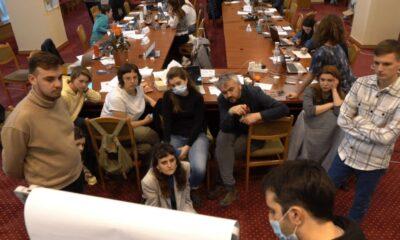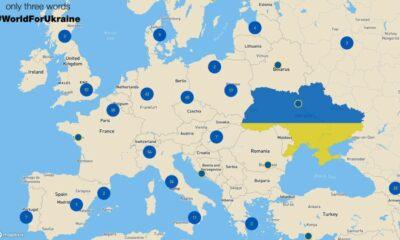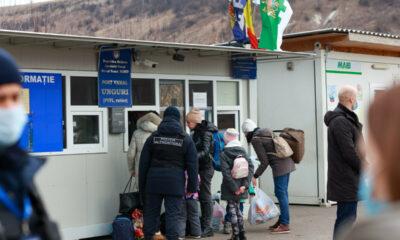Economy
Oil development in Kazakhstan underscores significance of Azerbaijan-Georgia transit corridor
Reading Time: 3 minutesEffective from November 1, Chevron’s subsidiary TengizChevroil is significantly augmenting oil shipments from Kazakhstan, via Azerbaijan and Georgia, to international markets. This development adds to
by Vladimir Socor, Eurasia Daily Monitor
Effective from November 1, Chevron’s subsidiary TengizChevroil is significantly augmenting oil shipments from Kazakhstan, via Azerbaijan and Georgia, to international markets. This development adds to the evidence that business confidence is returning to the Azerbaijan-Georgia transit corridor, in the aftermath of the Russia-Georgia war (see EDM, September 29). The U.S. company operates Kazakhstan’s super giant Tengiz onshore field, with ExxonMobil and the Kazakh government its among minority shareholders. With commercial reserves of some 1.2 billion tons (approximately 8.5 billion barrels). It is described as Chevron’s largest single source of oil in the world (Business Week, September 22).
In October of this year, TengizChevroil finalized an agreement with the BP-led Baku-Tbilisi-Ceyhan pipeline company (in which Chevron is a minority shareholder) to increase the inputs of Tengiz oil into that pipeline. The reported target is 98,000 barrels per day (bpd) or some 14,000 tons daily, to be reached next year. Shipments during the remainder of this year are expected to run at approximately 70,000 bpd or some 10,000 tons daily.
The oil is transported from the Tengiz field by rail to the Caspian port of Aktau, then by small-capacity tanker ships across the sea to Azerbaijan at Sangachal, the starting point of the Baku-Tbilisi-Ceyhan (BTC) pipeline. The company Cross Caspian Oil and Gas Logistics operates this shipping line as well as an oil port and pipeline terminal near BTC’s Sangachal terminal. Cross Caspian is a joint venture of Azerbaijan’s State Oil Company and the Dubai-registered Middle East Petrol Farm.
The inputs from Kazakhstan can fill the Baku-Tbilisi-Ceyhan pipeline to its capacity of one million barrels per day or 50 million tons annually. The line was pumping some 800,000 to 850,000 bpd prior to the August war in Georgia. It was never directly affected by the Russian military operations, but it had to reduce the volume of shipments temporarily after an explosion on the pipeline’s Turkish section on August 5 and a gas leak at the ACG offshore oilfield in Azerbaijan in September. The pipeline is now returning to full-throttle operation and taking the additional inputs from Tengiz.
Apart from the pipeline, TengizChevroil relies on railroad delivery of its oil via Azerbaijan and Georgia, en route to the Batumi terminal on Georgia’s Black Sea coast. Those volumes are small, but the company is considering an increase in rail shipments through that corridor in 2009. With Russia blocking the expansion of the Tengiz-Novorossiysk pipeline’s capacity, or imposing onerous conditions for that expansion, the Azerbaijan-Georgia corridor is proving useful as an alternative option.
Oil production targets at Tengiz are reported to be 540,000 bpd to 620,000 bpd for the current phase of development and nearly one million bpd in a subsequent phase. The field’s development and production schedule have been held back for years, however, by Russia’s preconditions to capacity expansion of the pipeline to Novorossiysk. This situation persists, and Moscow has just strengthened its decision-making powers even further by acquiring Oman’s minority share in that pipeline company (Kommersant, November 5). In this situation, the Chevron company envisages the possibility of a major increase in its shipments from Tengiz to the Baku-Tbilisi-Ceyhan pipeline (Turan, APA, Reuters, November 3).
Total available capacity on the Baku-Tbilisi-Ceyhan pipeline is slated to increase through technical means (chemical agents, additional pumping capacity) to approximately 1.5 million bpd or some 75 million tons annually. That can provide a westbound outlet (as opposed to a Russian one) for part of the production from Kashagan, the other super giant oil field in Kazakhstan.
On October 31 the consortium in charge of developing Kashagan was restructured, the production-sharing agreement (PSA) updated, and a new schedule of the field’s development agreed by the companies and the Kazakh government. The consortium, Agip KCO, includes Italy’s ENI, Kazakhstan’s KazMunayGaz, the American companies ExxonMobil and ConocoPhillips, Total of France, the Anglo-Dutch Shell company, and Japan’s Inpex.
Under the agreements just signed, the KazMunayGaz share is being doubled to 16.81 percent, now reaching parity with the shares of ENI, ExxonMobil, Total, and Shell, each of which accepted slight reductions in their shares. The proportion of Kazakh managers is being increased substantially, including a first deputy head of the operating company. Kazakhstan’s income from the project (which had been fixed at 5 percent until now) will be tied to world oil price fluctuations in a range between $45 and $180 per barrel.
ENI remains the operator during an “experimental” phase, following which the other four major shareholders would each take charge of an area of responsibility. The start of commercial production is now rescheduled to 2013, instead of 2010, for this 40-year project. First-phase production is now anticipated to rise from 75,000 bpd in the first year to 450,000 bpd or some 22 million tons annually by the third year (Kazakh TV Channel One via BBC Monitoring’s Global Newsline, October 31; Interfax, October 31).
With estimated commercial reserves of between 9 and 13 billion barrels (and geological reserves estimated at 38 billion barrels), Kashagan ranks as the richest oilfield discovered during the last 40 years worldwide. Some of Kashagan’s shareholders–to wit: ENI, Total, ConocoPhillips, and Inpex–are also among the Baku-Tbilisi-Ceyhan pipeline’s shareholders, a circumstance that should facilitate choosing that export route from the Kashagan field. Opening a westbound outlet for Kashagan’s production through the Azerbaijan-Georgia corridor is becoming a major issue of energy security for the West.
Economy
Moldova will receive a disbursement of 36 million euros as part of the the Economic Recovery Plan
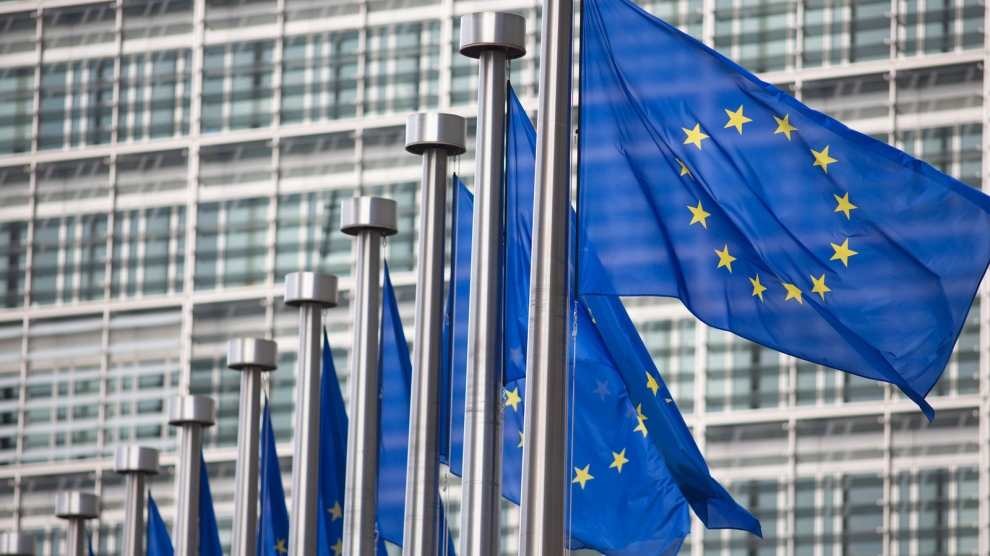
This week, the European Commission approved the disbursement of 36 million euros in grant money for the Republic of Moldova. The announcement was made by Deputy Director-General for Neighbourhood Policy and Enlargement Negotiations at the European Commission, Katarina Mathernova, who paid an official visit to the Republic of Moldova between September 13-15, together with Managing Director for Russia, Eastern Partnership, Central Asia, Regional cooperation and OSCE, at the European External Action Service, Michael Siebert.
The EU officials had meetings with President Maia Sandu, Minister of Foreign Affairs and European Integration, Nicu Popescu, Speaker of Parliament, Igor Grosu, Prime Minister of the country, Natalia Gavrilita, as well as key representatives of Government, international financial institutions and the civil society, according to a press release issued by the Delegation of the European Union to the Republic of Moldova.
Beside such topics as the EU-Moldova relations and prospects, the priorities of the reform agenda of the new Moldovan Government, preparations for the Eastern Partnership Summit at the end of the year and the Transnistrian conflict settlement, the officials also discussed the EU assistance in support of reforms and the Economic Recovery Plan for Moldova, which was announced in June with a total EU support of 600 million euros over the next 3 years.
“The first measures under the Economic Recovery Plan will shortly materialize, with the expected disbursement of 36 million euros in grant money under budget support programmes to support the authorities’ efforts to fight against the consequences of the pandemic. Moldova can count on EU’s assistance on its path to reforms and to recovery, bringing tangible results to citizens,” Katarina Mathernova stated.
The plan is based on assistance provided by the European Union through various bilateral and regional instruments, aiming to mobilize the funds in the form of grants, loans, guarantees and macro-financial assistance.
“The Economic Recovery Plan for the Republic of Moldova involves much more, not just this financial support provided immediately. It must help digital transformation, strengthen infrastructure, energy efficiency, education and support small and medium-sized enterprises,” the EU official also said.
As Prime Minister Natalia Gavrilita informed, “The Economic Recovery Plan and the 5 flagship initiatives for Moldova in the Eastern Partnership will directly contribute to the reform and consolidation of institutions, stimulate long-term socio-economic development, bring direct benefits to citizens, and unleash new economic opportunities through promoting the green agenda and digitization. Small and medium-sized enterprises (SMEs) have been hit hard by the crisis. Promoting and diversifying access to finance and reducing collateral requirements will be essential in supporting economic operators. We are grateful to the EU partners who will launch two programs to support 50 000 independent Moldovan SMEs to adapt to the new conditions.”
President of the Republic of Moldova, Maia Sandu, welcomed the decision of the European Union to disburse about 745 million lei in grant money, as the official page of the President’s Office announced. “EU support comes after a long period of freezing of European assistance, caused by former governments. We managed to relaunch the political dialogue with the European Union and resume financial assistance. The Republic of Moldova is gradually regaining the trust of its strategic partners. This European support is also a signal of encouragement for the new Government team in its commitment to clean up the institutions, fight corruption and launch development programs in the country,” said Maia Sandu.
Photo: unknown
Economy
Romania and Moldova signed a partnership memorandum pledging to cooperate in promoting their wines

The Chamber of Commerce and Industry of Romania (CCIR) and the National Office for Vine and Wine (NOVW) of the Republic of Moldova signed, last week, a memorandum of cooperation on organizing joint promotional activities in the markets of common interest, as the CCIR announced.
China, Japan or the USA are just some of the markets targeted by the Romanian and Moldovan institutions. The memorandum also involves advertising activities for wines from common indigenous varieties, promoting the oeno-tourist region, developing a tourist route in the two states, exchange of experience, study visits, and mutual support in identifying new export opportunities. “We are very confident that this collaboration between our organizations will lead to sustainable economic growth and a higher degree of well-being among Moldovans and Romanians,” claimed Deputy Secretary-General of CCIR, Bogdan Visan.
On the other hand, Director of the NOVW, Cristina Frolov, declared that no open competition with Romania is aimed at the governmental level of the Republic of Moldova. “This request for collaboration is a consequence of the partnership principle. Romania imports 10-12% of the wine it consumes, and we want to take more from this import quota. Every year, the Romanian market grows by approximately 2.8%, as it happened in 2020, and we are interested in taking a maximum share of this percentage of imported wines without entering into direct competition with the Romanian producer,” the Moldovan official said. She also mentioned that Moldova aims at increasing the market share of wine production by at least 50% compared to 2020, and the number of producers present on the Romanian market – by at least 40%.
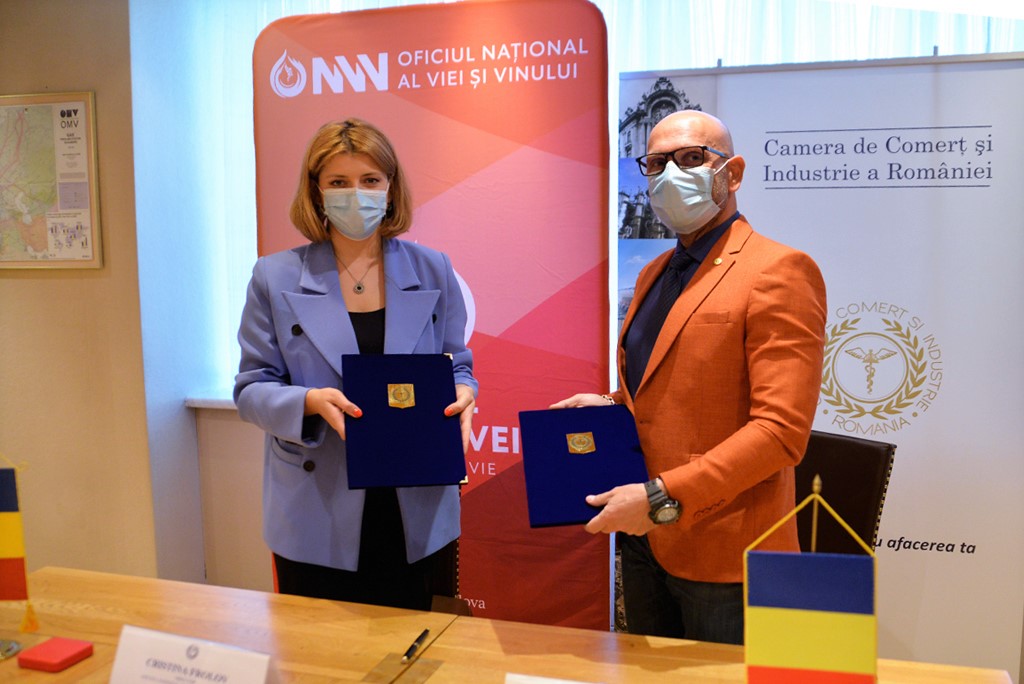
Source: ccir.ro
**
According to the data of the Romanian National Trade Register Office, the total value of Romania-Moldova trade was 1.7 billion euros at the end of last year and over 805 million euros at the end of May 2021. In July 2021, there were 6 522 companies from the Republic of Moldova in Romania, with a total capital value of 45.9 million euros.
The data of Moldova’s National Office of Vine and Wine showed that, in the first 7 months of 2021, the total quantity of bottled wine was about 27 million litres (registering an increase of 10% as compared to the same period last year), with a value of more than one billion lei, which is 32% more than the same period last year. Moldovan wines were awarded 956 medals at 32 international competitions in 2020.
Photo: ccir.ro
Economy
Moldova’s hope to be a top walnut exporter and its main difficulties
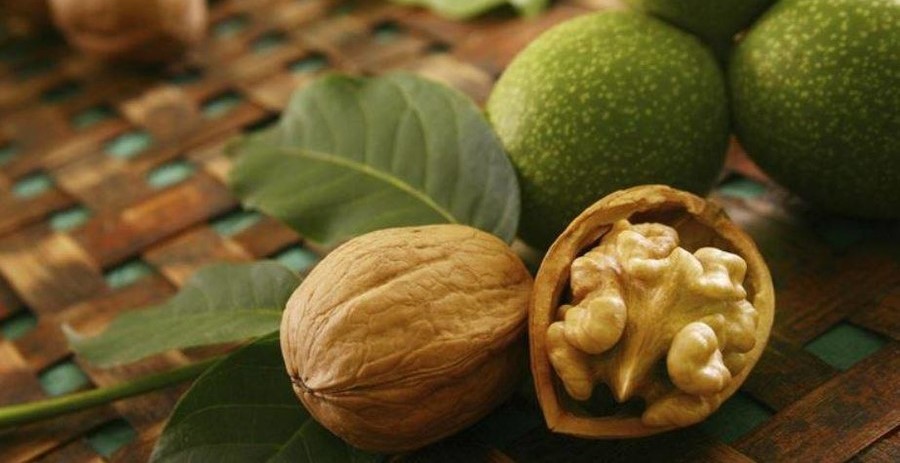
The Republic of Moldova has perfect weather conditions for growing walnut trees, that creating a great potential of walnut production and trade, especially on international markets, where the demand is way higher than the product’s supply. National and international experts believe that the country’s walnut production industry is on the verge of important transformations, which could lead to increased yields, quality and competitiveness worldwide.
According to authorities, Moldova exports 34-35 thousand tons of walnuts in shell, which is about 7% of the total export of fruit and 5% of the total export of horticultural products. The export value is assessed as being $120 million, that being 57-60% of the total fruit export value and about 50% of horticultural export value. Most of walnut crops are exported to the EU countries, such as France, Germany, the Netherlands, Romania and Austria. The country’s exports were among the world’s top 10 when it comes to the highest dollar value of the product during 2020.
Viorel Gherciu, Minister of Agriculture and Food Industry, pointed out that the production in the domestic walnut industry has increased by 55% in the last five years, which ranks Moldova among the main producers in the world.
“The biggest opportunity for this industry is that we are in the geographical proximity of the largest walnut import area in the world, which is the European Union, with almost 40% of total imports in the world. We are on the EU border, with privileged relations, with an Association Agreement. We already enjoy a good relationship in working with European importers, they trust our processors. A very close collaboration has been created and this is, in fact, the guarantee for those who invest in the area,” claimed the president of the Walnut Producers Association, Oleg Tirsina.
The data provided by the National Bureau of Statistics show that there are 34.7 thousand hectares of walnut plantations in the country. 20.90 hectares are represented by orchards. 75% of planted orchards are formed of old varieties trees. 30-35% of the exported production comes from orchards, the rest comes from individual farmers and plantations along the roads. This means that the quality of walnut production is not at its maximum potential. Developing commercial plantations through orchards modernization and extension of walnut varieties would provide double yield and better quality, experts say.
Governmental support in the form of subsidizing solutions, foreign investments and credit options are indispensable for the industry development. One of the financing options is the credit line of the European Investment Bank Project. Since 2016, 15 producers and processors of nuts, almonds and hazelnuts have benefited from these loans with the total amount of investments worth 8.7 million euros. A further extension of the project would provide another 60 million euros for the modernization of the horticultural sector in general and for harvesting organic walnuts in particular.
Photo: heymoldova.com


